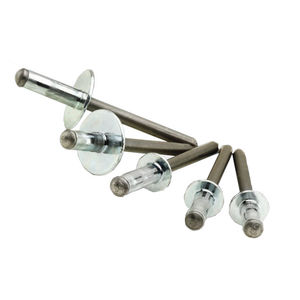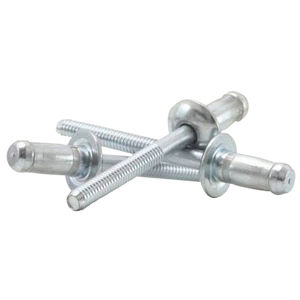
- Materials - Tools - Components
- Standard Mechanical Component
- Blind rivet
- STANLEY Engineered Fastening
- Products
- Catalogs
- News & Trends
- Exhibitions
Blind rivet POP® Closed-Endcountersunk headstainless steelwhite






Add to favorites
Compare this product
Characteristics
- Type
- blind
- Head
- countersunk head
- Material
- stainless steel
- Color
- white
- Other characteristics
- sealed, waterproof, high tensile strength, closed-end
Description
Fully sealed fastening! Our exclusive Closed-End rivet design is ideal for applications that need to be water-tight or when stem retention is paramount.
This blind rivet produces a seal that prevents passage of liquid or vapor at pressures up to 100 psi. The seal is possible thanks to a unique cup-shaped end configuration which prevents vapor or liquid from getting around or through the set rivet.
Our Closed-End blind sealing rivets provide up to 23% greater tensile strength than equivalent open-end rivets. Plus, closed-end rivets provide 100% mandrel retention, which can be an important factor in applications such as electric and electronic equipment.
This rivet type is available with dome or countersunk head styles in a variety of material combinations, including stainless steel.
Fast Facts:
Blind hole, one-sided installation capability.
Unique cup-shaped end configuration.
Seals tight, preventing passage of vapor or liquid around or through the set rivet.
23% greater tensile strength than equivalent open-end rivets.
100% mandrel retention.
Assembly applications include white goods, electronic enclosures, signs, outdoor cases, scoreboards, LED signs, and recreational vehicles.
Catalogs
No catalogs are available for this product.
See all of STANLEY Engineered Fastening‘s catalogsExhibitions
Meet this supplier at the following exhibition(s):

*Prices are pre-tax. They exclude delivery charges and customs duties and do not include additional charges for installation or activation options. Prices are indicative only and may vary by country, with changes to the cost of raw materials and exchange rates.







